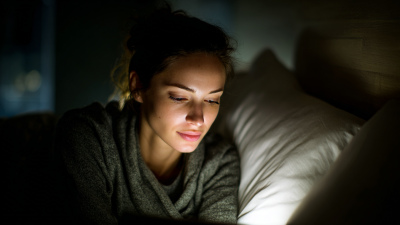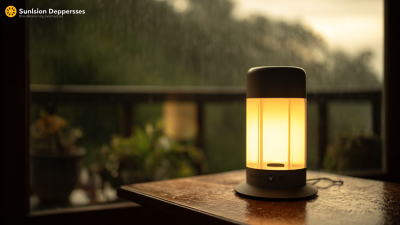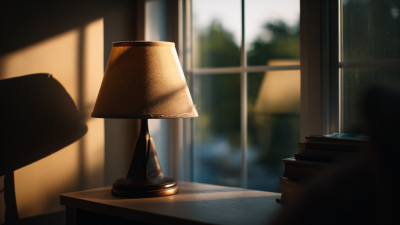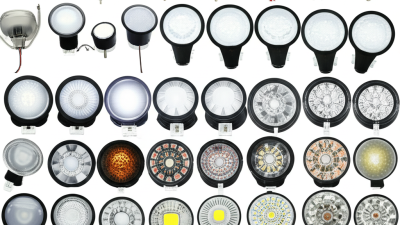The Science Behind Night Lights and Their Impact on Sleep Quality
In today's fast-paced world, the use of night lights has become ubiquitous, impacting our sleep quality in ways that are often overlooked. Although these soft, ambient lights can provide comfort and security during the night, they also pose significant implications for our circadian rhythms and overall health. Research suggests that exposure to artificial light during nighttime, especially from night lights, can interfere with the secretion of melatonin, the hormone responsible for regulating sleep-wake cycles. Moreover, understanding the science behind night lights reveals the delicate balance between providing safety and maintaining a conducive sleep environment.

In this article, we will explore various types of night lights, their mechanisms, and practical tips on how to optimize their use for better sleep quality, ensuring that you can benefit from their presence without compromising your rest.
The Role of Lighting in Circadian Rhythms and Sleep Patterns
Lighting plays a crucial role in regulating our circadian rhythms, the internal biological clocks that dictate our sleep-wake cycles. Exposure to natural light during the day helps to keep these rhythms aligned, promoting alertness and enhancing mood. Conversely, artificial light, especially blue light emitted by screens and certain types of night lights, can disrupt these rhythms when used at inappropriate times. Research suggests that bright or high-intensity light during evening hours can delay the production of melatonin, the hormone responsible for sleep onset, thereby altering sleep patterns and reducing overall sleep quality.

In addition to its direct effects on melatonin, the type and timing of light exposure also influence the overall architecture of our sleep. Soft, warm lighting in the evening can create a calming atmosphere that encourages relaxation and prepares the body for sleep. Conversely, harsh lighting may lead to increased alertness, making it more difficult to fall asleep. Understanding the impact of lighting choices on circadian rhythms can guide us toward better sleep hygiene practices, such as dimming lights in the evening or utilizing soft night lights that minimize disruption to our natural sleep cycles.
Understanding the Different Types of Night Lights and Their Effects
 Night lights come in various forms, each with distinct effects on sleep quality. LED night lights, for instance, emit a wavelength that can interfere with melatonin production, the hormone responsible for regulating sleep cycles. According to a study published in the Journal of Clinical Sleep Medicine, exposure to blue light at night can delay the onset of sleep and disrupt circadian rhythms. In contrast, red or amber night lights are less likely to impede melatonin synthesis, making them a better choice for promoting restful sleep.
Night lights come in various forms, each with distinct effects on sleep quality. LED night lights, for instance, emit a wavelength that can interfere with melatonin production, the hormone responsible for regulating sleep cycles. According to a study published in the Journal of Clinical Sleep Medicine, exposure to blue light at night can delay the onset of sleep and disrupt circadian rhythms. In contrast, red or amber night lights are less likely to impede melatonin synthesis, making them a better choice for promoting restful sleep.
When choosing a night light, consider its brightness and color temperature. Dimming capabilities can be beneficial, allowing you to adjust the light intensity based on your environment. The American Academy of Sleep Medicine suggests using night lights only when necessary. Here are some tips:
- Opt for warm-toned lights to minimize blue light exposure.
- Place the light away from the direct line of sight.
- Keep it dim to avoid waking yourself up during the night.
These small adjustments can significantly enhance your overall sleep experience.
Quantifying the Influence of Light Intensity on Sleep Quality
The intensity of light plays a crucial role in determining sleep quality. Research has shown that exposure to bright lights, particularly blue light emitted from screens and certain types of bulbs, can significantly disrupt the circadian rhythm, leading to difficulties in falling asleep and staying asleep. This disruption occurs because bright light signals the brain that it is still daytime, inhibiting the production of melatonin, the hormone responsible for regulating sleep. Thus, the brightness of night lights in our environment can have immediate effects on our sleep patterns.
Conversely, dim lighting tends to have a more calming effect, allowing for a smoother transition into sleep. Studies suggest that using lower-intensity night lights can help maintain a balance in light exposure during the evening hours, minimizing the negative impact on melatonin levels. The color temperature of these lights also matters; warmer, softer tones are less likely to interfere with the sleep cycle compared to cooler, brighter options. By understanding how light intensity influences sleep, individuals can make informed choices about their night lighting, ultimately enhancing their overall sleep quality.
The Science Behind Night Lights and Their Impact on Sleep Quality
Investigating the Color Temperature of Night Lights and Sleep Disruptions
Night lights, often seen as harmless, can significantly disrupt sleep quality, particularly when considering their color temperature. Research indicates that blue light, which has a color temperature above 5000 Kelvin, can inhibit melatonin production—a hormone crucial for regulating sleep cycles. A study by the American Medical Association highlights that exposure to blue light in the evening can lead to difficulty falling asleep, ultimately reducing overall sleep duration by about 30%. This disruption can have cascading effects on health, including increased risks for conditions such as obesity and heart disease.
In contrast, warm-colored night lights, with a color temperature around 2700 Kelvin, are found to be less detrimental to sleep. A report from the National Sleep Foundation suggests that warmer tones can create a more conducive environment for sleep, allowing for better melatonin production. Individuals using these lower color temperature lights reported improved sleep quality and increased feelings of restfulness upon waking. Therefore, the simple choice of night light color can contribute to a healthier sleep environment and overall well-being.
Recommendations for Optimal Night Light Use to Enhance Sleep Quality
Night lights can play a significant role in enhancing sleep quality, especially for those who may be sensitive to abrupt changes in lighting during the night. When considering optimal night light use, it is essential to select lights that emit warmer, dimmer hues. Research indicates that blue light exposure can interfere with the body’s natural circadian rhythms, making it more difficult to fall asleep and stay asleep. Soft red or amber lights are recommended as they have a minimal impact on melatonin production, allowing for a smoother transition into sleep.
Additionally, environment plays a crucial role in achieving restful sleep. Maintaining good sleep hygiene is just as important as the lighting choices made in the bedroom. Establishing routines such as dimming lights an hour before bedtime, limiting screen time, and creating a calming atmosphere free from disruptive noises can significantly enhance sleep quality. Implementing these strategies, alongside appropriate night light usage, can help improve overall sleep patterns, especially for those struggling with sleep disorders or irregular schedules, like shift workers.
Related Posts
-

Ultimate Guide to Choosing the Perfect Sleep Light for Your Bedroom
-

5 Key After-Sales Benefits and Low Maintenance Tips for the Best Sunlight Lamp for Depression
-

How to Identify a Top Manufacturer for the Best Natural Sun Light Lamp: Key Factors and Data Insights
-

Ultimate Checklist for Choosing the Best Sunshine Light for Your Home
-

Exploring Unique Alternatives to Natural Lamps for Sustainable Lighting Solutions
-

Premium LED Light Lamps from China's Top Factories for Global Buyers
